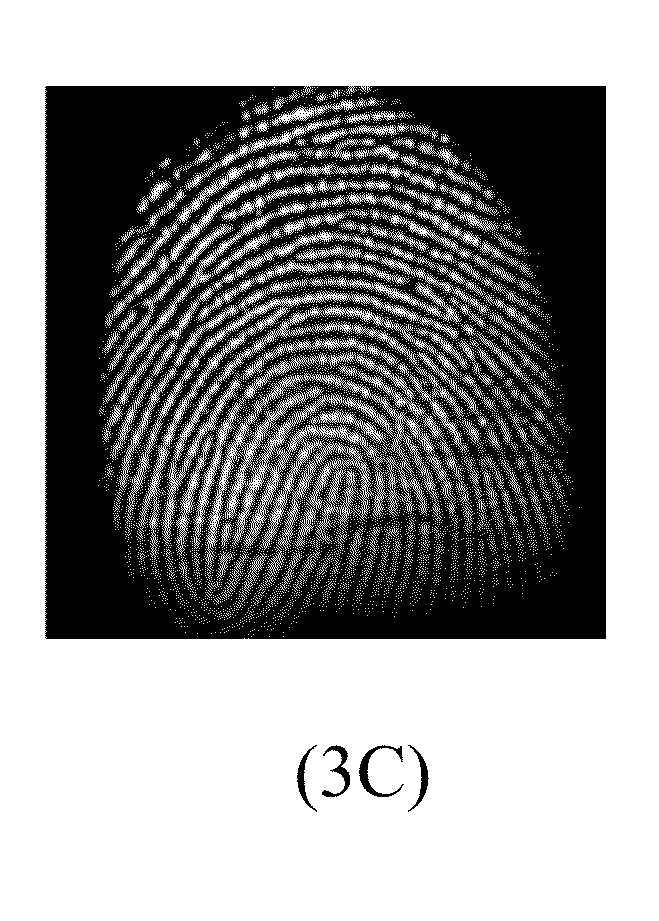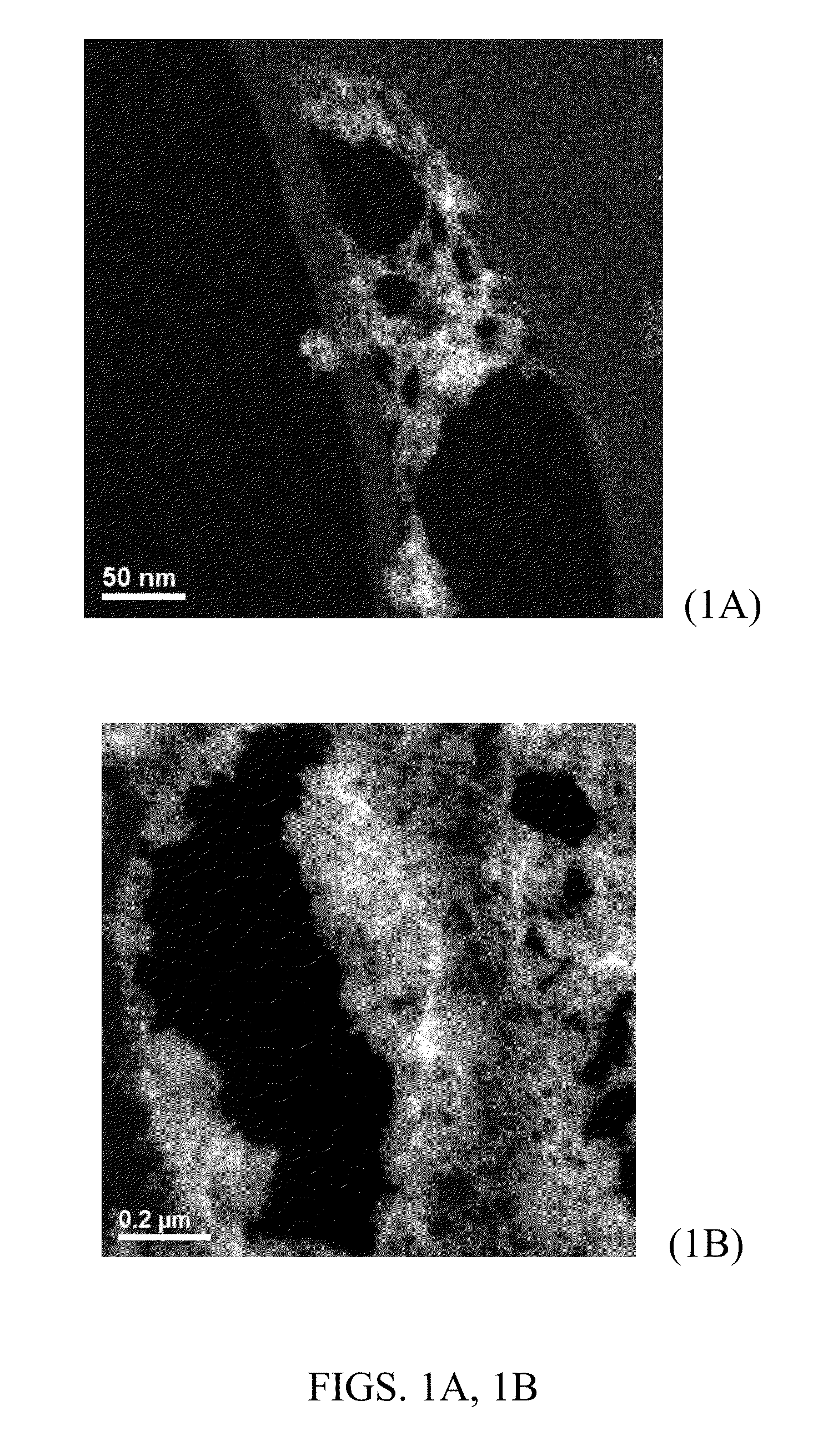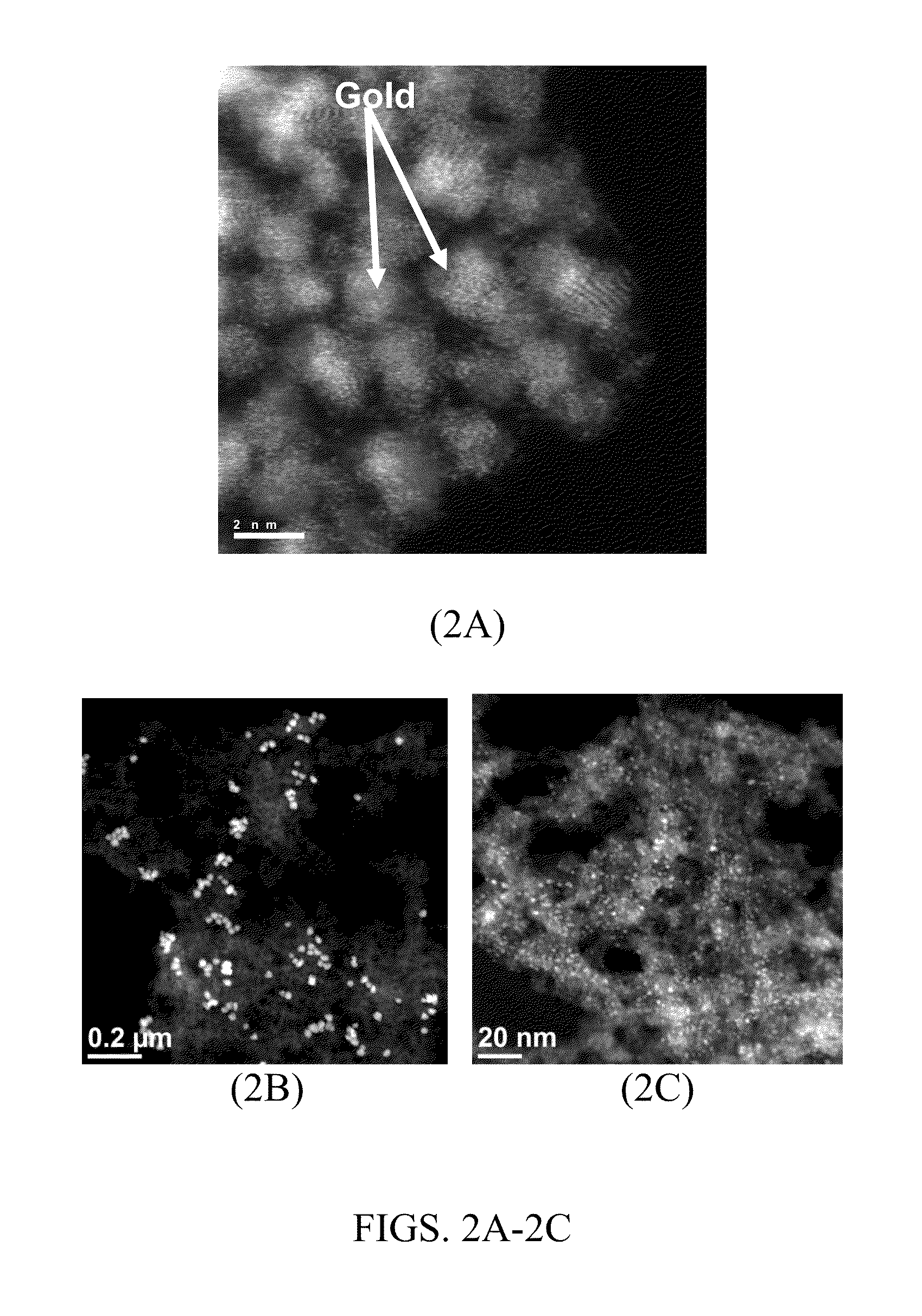Compositions and methods of use for detection and imaging of prints by surface-enhanced spectroscopic techniques
a spectroscopic technique and surface enhancement technology, applied in the field of chemical detection and macrostructural imaging of surface prints, can solve the problems of difficult imaging techniques to elucidate fingerprints, difficult to image latent fingerprints, and often ample time for decomposition of latent fingerprints, etc., to achieve the effect of being advantageously non-destructiv
- Summary
- Abstract
- Description
- Claims
- Application Information
AI Technical Summary
Benefits of technology
Problems solved by technology
Method used
Image
Examples
example 1
Aerogel Preparation
Aerogel Processing Conditions
[0070]The aerogel samples were processed in a SFT-250™ Supercritical Fluid Extractor using a 100 mL vessel. The hexanes were replaced with liquid CO2 and removed supercritically to form an aerogel. The vessel temperature and vessel over temperature were maintained at 50 and 55° C., respectively. The pressure was maintained at about 110 bar. The vessel was then depressurized over a 12 hour span.
Zinc Oxide Aerogel Preparation
[0071]Following a reported procedure (Gao, Y. P., et al., Chem. Mater., 19, pp. 6007-6011, 2007), zinc nitrate hexahydrate (6.00 g, 20.17 mmol) was dissolved in 2-propanol (32 mL), and propylene oxide was added to the stirring solution. The molar ratio of propylene oxide to the metal ion was 10:1. After 24 hours at room temperature (approximately 18-25° C.), a white sol-gel formed and consumed the entire reaction vessel. The sol-gel was washed and soaked several times with hexanes to removed excess reagents and solve...
example 2
Preparation of Noble Metal-Coated Aerogel Cores
Silver-Citrate Colloid Preparation
[0073]The preparation of the silver-citrate colloid solutions has been exhausted in the literature, e.g., (a) Keir, R., et al., Applied Spectroscopy, 56, pp. 551-559, 2002, (b) Lee, P. C., et al., J. Phys. Chem., 86, pp. 3391-3395, 1982, and (c) Munro, C. H., et al., Langmuir, 11, pp. 3712-3720, 1995. In a typical preparation, a solution of silver nitrate (90 mg, 0.53 mM) in 500 mL of water was heated to 90° C. Next, trisodium citrate (10 mL, 38.8 mM) was added slowly to the solution. After about 1 hour, the solution was marked up to 500 mL with distilled water. Excess reagents were removed via iterative centrifugation and decanting steps. The product was collected and redispersed in ethanol. The solution was then centrifuged to separate the product from the ethanol, and the product introduced into ethyl acetate, which served as the final dispersal solvent.
Gold-Citrate Colloid Preparation
[0074]Gold-citr...
example 3
Deposition of the Print Detection Composition onto a Latent Fingerprint
[0079]Deposition onto a Latent Fingerprint for SERS Analysis
[0080]For SERS analysis, the ethanol solution containing the metal-coated aerogel was exchanged from ethanol to ethyl acetate via iterative centrifugation and decanting steps, and the exchanged solution sonicated prior to use. The metal-coated aerogel ethyl acetate solution was next loaded into a refillable glass bottle connected to a commercial grade bottom feeder Badger™ airbrush. The metal-coated aerogel solution was then sprayed by use of the airbrush onto a sample surface containing the latent fingerprint. No fluorophore was used in this experiment. Raman chemical images and spectra were acquired after deposition.
Deposition onto a Latent Fingerprint for SEF Analysis
[0081]SEF analysis was achieved in the same manner as the SERS analysis of a latent fingerprint, except that the surface-functionalized metal-coated aerogel, described in Example 2, was u...
PUM
| Property | Measurement | Unit |
|---|---|---|
| diameter | aaaaa | aaaaa |
| diameter | aaaaa | aaaaa |
| diameter | aaaaa | aaaaa |
Abstract
Description
Claims
Application Information
 Login to View More
Login to View More - R&D
- Intellectual Property
- Life Sciences
- Materials
- Tech Scout
- Unparalleled Data Quality
- Higher Quality Content
- 60% Fewer Hallucinations
Browse by: Latest US Patents, China's latest patents, Technical Efficacy Thesaurus, Application Domain, Technology Topic, Popular Technical Reports.
© 2025 PatSnap. All rights reserved.Legal|Privacy policy|Modern Slavery Act Transparency Statement|Sitemap|About US| Contact US: help@patsnap.com



